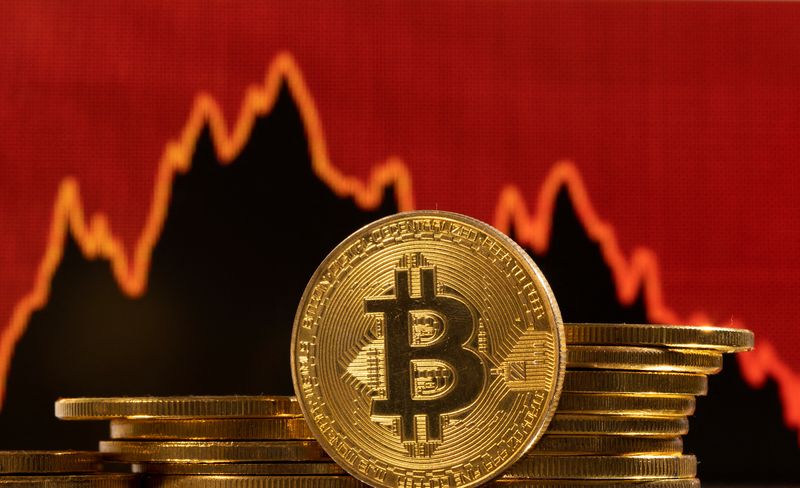© Reuters
Investing.com– sank to a two-week low on Wednesday, deepening losses to as far as $60,000 as investors locked-in profits ahead of a Federal Reserve meeting, while heavy capital outflows from a major exchange-traded fund also weighed.
A broader risk-off move in currency markets saw traders pivot into the dollar while collecting profits in Bitcoin after it surged to record highs of over $73,000 earlier in March.
The hit a two-week high before the conclusion of a Fed meeting later in the day, where the central bank is widely expected to and offer more cues on when it plans to begin cutting interest rates.
Bitcoin traded at $61,287.9 by 00:51 ET (01:48 GMT). It had fallen as far as $60,850.9 earlier in the day.
Adding to the downward pressure on Bitcoin, the token saw a flash crash on crypto exchange BitMEX, where it sank as low as $8,900 following a series of massive sell orders on Tuesday. BitMEX said it was investigating potential wrongdoing.
Bitcoin capital inflows continue, but Grayscale a point of contention
Data from digital asset manager CoinShares showed earlier this week that Bitcoin-linked investment products saw total inflows of $2.86 billion in the past week, as its recently-approved ETFs continued to garner investor interest.
But the Grayscale Bitcoin Trust (BTC) (NYSE:) saw sustained outflows, of a whopping $1.25 billion over the past week. This saw the fund manager’s assets under management sink by about $2 billion in the past week, adding to the selling pressure on Bitcoin.
Still, Bitcoin remained up around 50% so far in 2024, having seen massive buying after the Securities and Exchange Commission approved spot ETFs in U.S. markets.
Anticipation of the token’s halving event, which halves the rate at which new Bitcoin is generated every four years, is also expected to support the cryptocurrency. The halving event is due to take place in April.
Analysts said that current weakness in Bitcoin presented a buying opportunity for the token ahead of its halving.
This news is republished from another source. You can check the original article here

